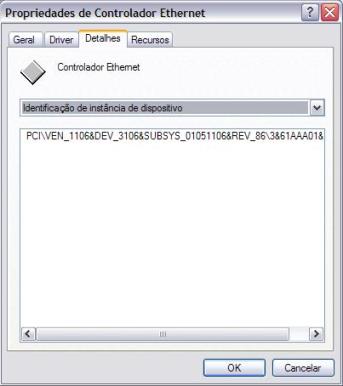
No patent rights are granted to any of the circuits described herein. ©2007 Hamamatsu Photonics K. Present this coupon with your More Rewards card to the. Digital art system - sunlite driver download. Hamamatsu makes electromagnetic mirrors, which consist of a magnet and a MEMS mirror chip. The basic operating principle of electromagnetic mirrors is shown in the figure below. When an electrical current flows into the coil on the MEMS mirror, the mirror tilts according to the Lorentz force.
Search for, concatenate or copy DLI recordings. (added timestamp files 2021-2029) Drivers for F16W, F8, F16, F24 Loggers: 2.12.28: 08/30/17.  Download the latest version of Double Driver for Windows. Create a security copy ofyour drivers. Sometimes, the task of updating your drivers can be very difficult.
Download the latest version of Double Driver for Windows. Create a security copy ofyour drivers. Sometimes, the task of updating your drivers can be very difficult.
Hamamatsu Photonics K.k Sound Cards Redeem
- Disclaimer Products manufactured by Hamamatsu Photonics K.K. (hereafter 'Hamamatsu') are intended for use in general-use electronic devices (such as measurement equipment, office equipment, information communications equipment, household appliances, etc.).
- HAMAMATSU PHOTONICS K.K. Manufactures electron tubes, semiconductors, and image processors. The Company's products include photosensitive electronic tubes, optical/image sensors, X-ray related.
- This material is not intended to be a solicitation to buy or sell any securities of Hamamatsu Photonics K.K. The information contained in this material is based on data available as of making it. No guarantees, promises are made as to its accuracy or completeness.
Hamamatsu Photonics K.k Sound Cards Download

HCImage
|
|
LabVIEW™ |
|
MATLAB® |
|
HoKaWo |
|
HiPic |
|
HiPic/Spectro |
|
HPD-TA |
|
| Additional software options are available visit our global site, www.hamamatsu.com to learn more. | |
PHOTON IS OUR BUSINESS © 2007 HAMAMATSU PHOTONICS K. K.
▲ Photomultiplier Tubes
▲ Photomultiplier Tube Modules © 2007 HAMAMATSU PHOTONICS K. K.
Introduction Light detection technolgy is a powerful tool that provides deeper understanding of more sophisticated phenomena. Measurement using light offers unique advantages: for example, nondestructive analysis of a substance, high-speed properties and extremely high detectability. Recently, in particular, such advanced fields as scientific measurement, medical diagnosis and treatment, high energy physics, spectroscopy and biotechnology require development of photodetectors that exhibit the ultimate in various performance parameters. Photodetectors or light sensors can be broadly divided by their operating principle into three major categories: external photoelectric effect, internal photoelectric effect and thermal types. The external photoelectric effect is a phenomenon in which when light strikes a metal or semiconductor placed in a vacuum, electrons are emitted from its surface into the vacuum. Photomultiplier tubes (often abbreviated as PMT) make use of this external photoelectric effect and are superior in response speed and sensitivity (low-light-level detection). They are widely used in medical equipment, analytical instruments and industrial measurement systems. Light sensors utilizing the internal photoelectric effect are further divided into photoconductive types and photovoltaic types. Photoconductive cells represent the former, and PIN photodiodes the latter. Both types feature high sensitivity and miniature size, making them well suited for use as sensors in camera exposure meters, optical disk pickups and in optical communications. The thermal types, though their sensitivity is low, have no wavelength-dependence and are therefore used as temperature sensors in fire alarms, intrusion alarms, etc. This handbook has been structured as a technical handbook for photomultiplier tubes in order to provide the reader with comprehensive information on photomultiplier tubes. This handbook will help the user gain maximum performance from photomultiplier tubes and show how to properly operate them with higher reliability and stability. In particular, we believe that the first-time user will find this handbook beneficial as a guide to photomultiplier tubes. We also hope this handbook will be useful for engineers already experienced in photomultiplier tubes for upgrading performance characteristics.
Information furnished by Hamamatsu Photonics is believed to be reliable. However, no responsibility is assumed for possible inaccuracies or omission. The contents of this manual are subject to change without notice. No patent rights are granted to any of the circuits described herein. ©2007 Hamamatsu Photonics K. K.
© 2007 HAMAMATSU PHOTONICS K. K.
CONTENTS
CHAPTER 1 INTRODUCTION .............................. 1 1.1
Overview of This Manual ................................... 2
1.2
Photometric Units ........................................ 4
1.3
1.2.1
Spectral regions and units ........................... 4
1.2.2
Units of light intensity ............................... 5
History ................................................ 10 1.3.1
History of photocathodes ........................... 10
1.3.2
History of photomultiplier tubes ...................... 10
References in Chapter 1 ........................................ 12
CHAPTER 2 BASIC PRIN
